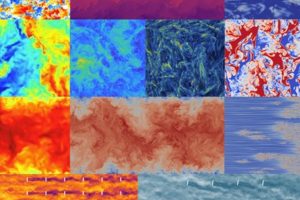
A group led by Charles Meneveau, the Louis M. Sardella Professor in Mechanical Engineering and an associate director of the Institute for Data Intensive Engineering and Science (IDIES), was chosen as one of 10 datasets that is being integrated into the National Artificial Intelligence Research Resource (NAIRR) Pilot, a program under the umbrella of the National Science Foundation (NSF). The Johns Hopkins Turbulence Database (JHTDB) was selected through a competitive process led by NSF in partnership with 12 federal agencies and will be used for the generation, collection, and curation of high-quality datasets targeted at training the nation’s AI-literate workforce.

Charles Meneveau
“Our database provides tools to study turbulence interactively, on petabyte scales,” Meneveau said. “Users can place immersive virtual sensors into the simulated fields, which immediately send a data stream to the users about their environment, avoiding expensive and time-consuming large data downloads.”
Meneveau said that universities are in a unique position to create and maintain such databases. The group has been collaborating with fluid dynamics researchers around the world for more than a decade to continue building the database in an open, interactive way that facilitates sharing, reuse, and accelerated discovery. JHTDB is a highly multidisciplinary IDIES effort funded mostly by NSF, joining experts from mechanical engineering, physics and astronomy, computer science, and applied mathematics.
Among the other databases chosen by NAIRR is the Phase-Field Fracture Simulation Dataset, led by faculty in the Department of Civil and System Engineering, as well as databases from institutions like the Monterey Bay Aquarium Research Institute and the University of Michigan.
“It’s exciting to be chosen by NAIRR, given the importance of high-quality scientific data in fluid dynamics for training innovative AI tools,” Meneveau said. “The next step is enlarging and enhancing the system to interface more easily with AI.”